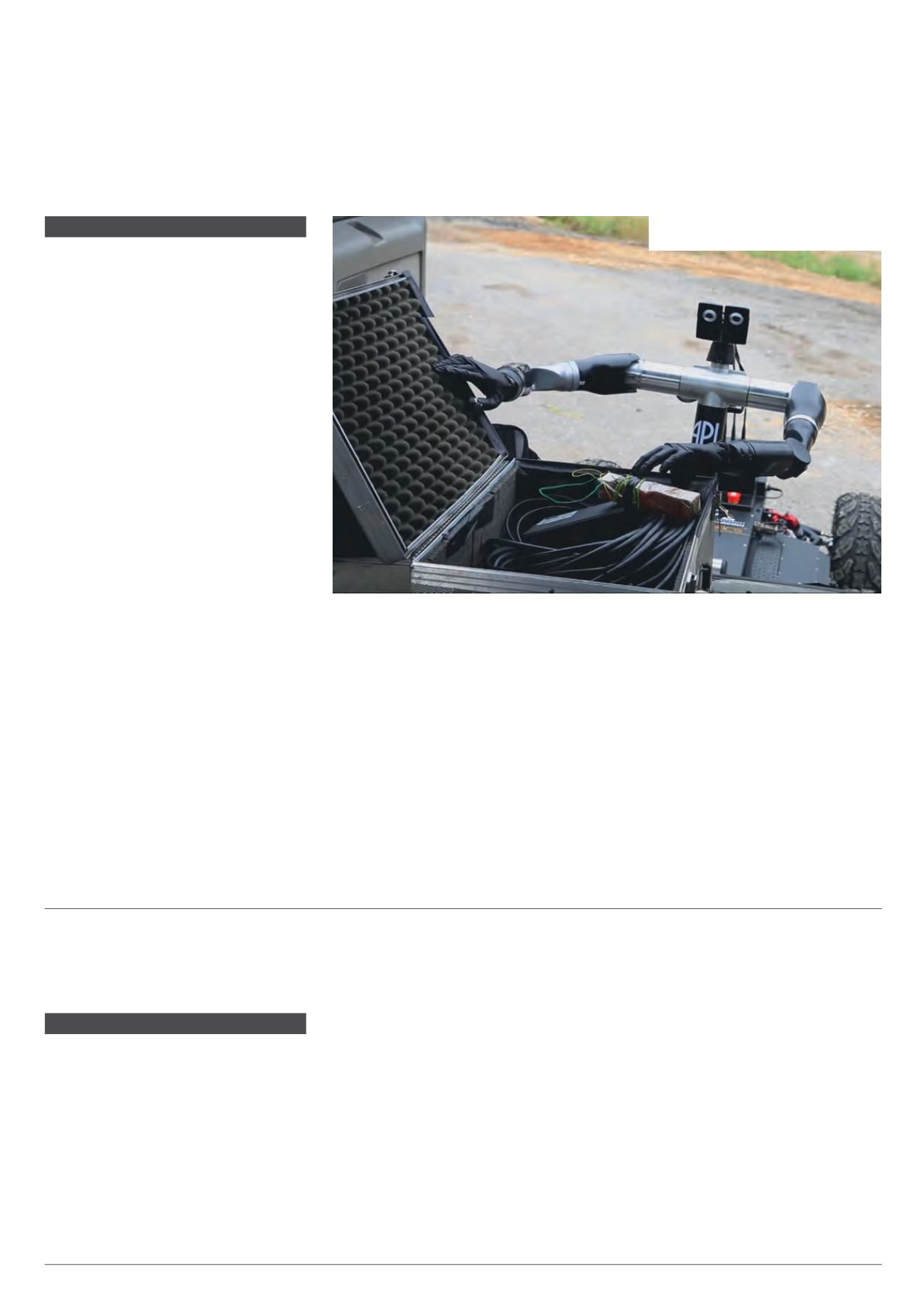

7
Platform one
With her distinctive modular prosthetic
limbs that are analogues of human arms
and hands, Robo Sally is one of several
research platforms being used by Johns
Hopkins University’s Applied Physics
Laboratory (JHU APL), which showcased
its activities at May’s Xponential show in
New Orleans in support of US DoD efforts
to field rapid improvements in bomb
disposal robots (writes Peter Donaldson).
One of Robo Sally’s functions, software
engineer Leif Powers explained, is
to help the US Army’s Indian Head
Explosive Ordnance Disposal (EOD)
Technology Division understand the
cost-effectiveness of trade-offs between
Sally’s sophisticated human-like hands
and the simple two-finger gripper fitted to
the soldier-portable Advanced Explosive
Ordnance Disposal Robotic System
(AEODRS) Increment 1 robot also
displayed on the stand.
One of the questions JHU APL is
investigating is whether AEORDS
Increment 1, with its single arm and
gripper, can deal with car doors, Powers
said, explaining that they can be “painful”
for robots to open as there are many
different mechanisms requiring various
techniques to manipulate successfully.
Robo Sally’s two arms and fully
articulated hands with force-feedback
sensors should be better at opening car
doors, and JHU APL is helping the Army
quantify that and judge how their higher
functionality and cost compare with the
cheaper and simpler but less capable
gripper. This understanding is intended to
inform the Army’s requests for proposals
and to help the service evaluate bids.
JHU APL has a set of “COTS-ish”
robots bought commercially then
equipped with the SAE AS4 JAUS
open network architecture that enables
them to be used as test mules for a
wide variety of hardware and software
including sensors, manipulators,
communications systems and
autonomous behaviour modules.
Robotics and autonomy programme
manager Dr Reed F Young said one
new capability under investigation is
stereoscopic vision to enable a much
more refined kind of telepresence for the
EOD technician. “The ideal would be if
you could physically replicate a person
being there,” he said.
Military’s hands-on evaluation
Bomb disposal
Unmanned Systems Technology
| June/July 2016
A team of engineers at NovAtel has
started to develop functionally safe
GNSS positioning technology for fully
autonomous applications (writes Nick
Flaherty).
The group is using its combined
experience to develop safety-critical
systems for the aviation industry to meet
the future safety thresholds required
for driverless cars and autonomous
applications in agriculture, mining and
other commercial markets as well as
government and military applications. It
plans to achieve ISO/TS 16949 safety
compliance by the end of 2016 as the first
step towards an ISO 26262-compliant
product for driverless cars.
“The Federal Aviation Agency and
other global space-based augmentation
systems have used certified NovAtel
GNSS receivers for many years as the
foundation of their systems,” said Michael
Ritter, president and CEO at NovaTel.
“With full GNSS signal and
constellation support needed to solve
the performance criteria for autonomous
driving, NovAtel is moving towards
delivering the optimal solution for
autonomous systems.”
Safety-critical GNSS due
Satellite navigation
Robo Sally is one research strand aimed
at improving bomb disposal robots









